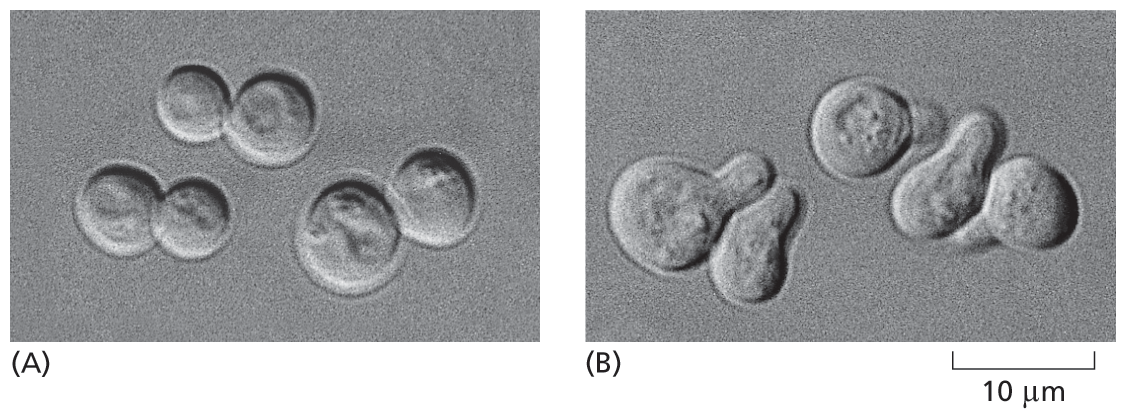
CHAPTER SIXTEEN 16
Cell Signaling
Individual cells, like multicellular organisms, need to sense and respond to their environment. A free-living cell—even a humble bacterium—must be able to track down nutrients, tell the difference between light and dark, and avoid poisons and predators. And if such a cell is to have any kind of “social life,” it must be able to communicate with other cells. A yeast cell can secrete a mating factor that will attract yeast cells of the opposite “sex,” which reorganize their cell structure to extend toward the cell that emitted the signal (Figure 16–1).

More information
Two micrographs of yeast cells. Micrograph A shows several spherical yeast cells. Each about 5 micrometers in diameter. Micrograph B shows budding yeast cells. They appear ovular with rounded protrusions that make them about 10 micrometers long.
Figure 16–1 Yeast cells respond to mating factor. Budding yeast (Saccharomyces cerevisiae) cells are (A) normally spherical, but (B) when they are exposed to an appropriate mating factor produced by neighboring yeast cells, they extend a protrusion toward the source of the factor. (Courtesy of Michael Snyder.)
In a multicellular organism, things are much more complicated. Cells must interpret the multitude of signals they receive from other cells to help coordinate their behaviors. During animal development, for example, cells in the embryo exchange signals to determine which specialized role each cell will adopt, what position it will occupy in the animal, and whether it will survive, divide, or die. Later in life, a large variety of signals coordinates the animal’s growth and its day-to-day physiology and behavior. In plants as well, cells are in constant communication with one another. These cell–cell interactions allow the plant to coordinate what happens in its roots, stems, and leaves.
In this chapter, we examine some of the most important mechanisms by which cells send signals and interpret the signals they receive. First, we present an overview of the general principles of cell signaling. We then consider two of the main systems animal cells use to receive and interpret signals. Finally, we describe a few signaling mechanisms that work in a different way—including one that operates in plants—before considering how these intricate signaling networks ultimately interact to control complex behaviors.